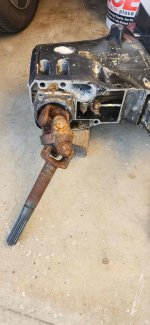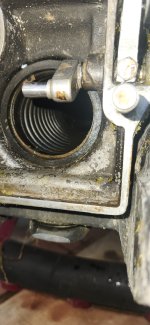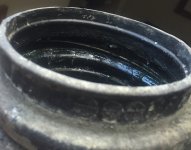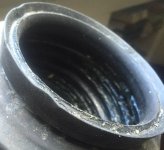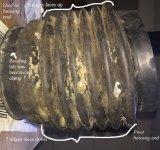I just pulled my OD, an OMC Cobra. I have a leak and a vibration. Water was getting into the U-Joint bellows. That caused rust on the U-Joint and damage to the U-Joint bearing. (there is another post about that called XXX.)
I thought that I was careful to prep the surfaces well last time. I cleaned off all old gasket material and use a good sealer. I'm not sure how the water got in. Is there a way to check for a leak after the OD is back on the boat and after the first time in the water?
That could have saved me an expensive repair.
See pictures of the transom surface after prepping it for the reinstall. That may not be for a while because I have to decide how to repair the U-Joint.
Also, are there better quality, and maybe thicker gaskets that prevent leaks? Last time I used Sierra brand.
I thought that I was careful to prep the surfaces well last time. I cleaned off all old gasket material and use a good sealer. I'm not sure how the water got in. Is there a way to check for a leak after the OD is back on the boat and after the first time in the water?
That could have saved me an expensive repair.
See pictures of the transom surface after prepping it for the reinstall. That may not be for a while because I have to decide how to repair the U-Joint.
Also, are there better quality, and maybe thicker gaskets that prevent leaks? Last time I used Sierra brand.




















